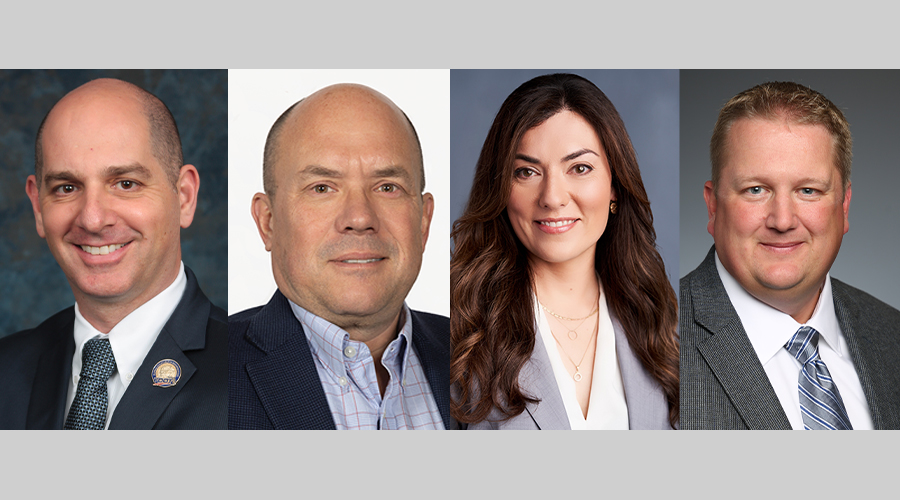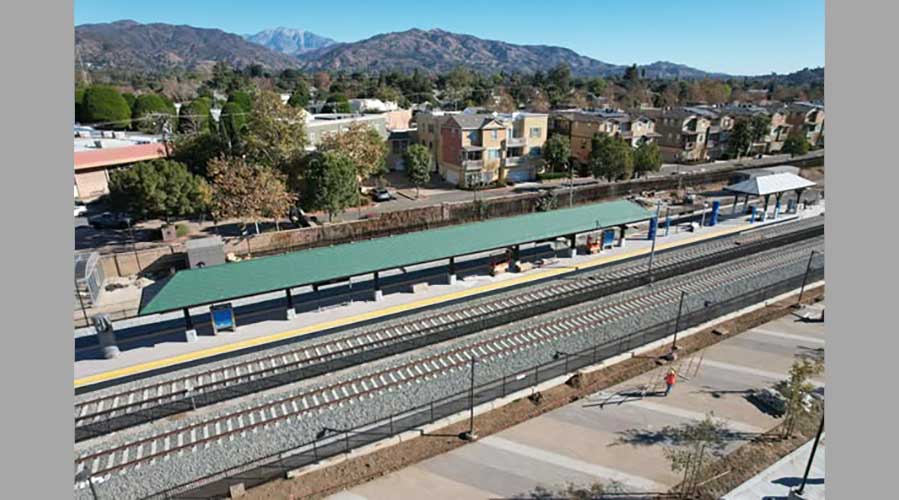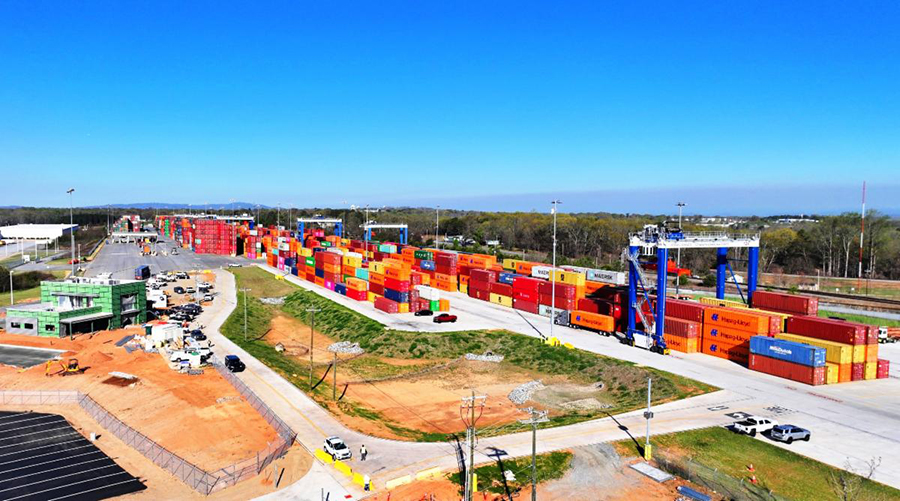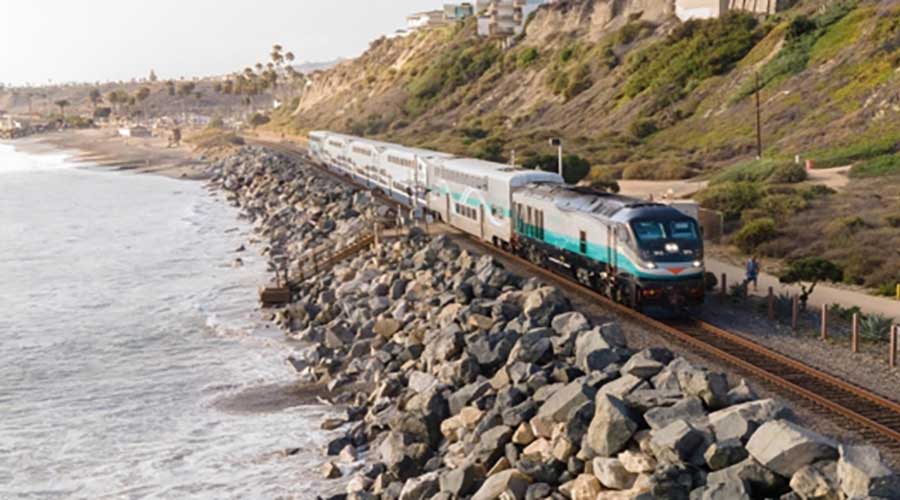Newsletter Sign Up
Stay updated on news, articles and information for the rail industry
Stay updated on news, articles and information for the rail industry
Rail News Home
Passenger Rail
Rail News: Passenger Rail
10/8/2001
Rail News: Passenger Rail
Midwest High Speed Rail Coalition discusses progress, funding at fall meeting
advertisement
At Midwest High Speed Rail Coalition’s fall meeting held Oct. 6 in Chicago, officials from Midwest HSR, Amtrak and Amtrak Reform Council shared the latest news from the passenger rail front lines — HSRIA, RIDE-21 and the Airline Security Act — and encouraged attendees to contact their representatives by signing provided postcards asking legislators to "work to get a good funding package for rail passed in this session." But the news was mixed.
On one hand, coalition officials believe high-speed rail is finally on the radar screen more than ever before. Moving toward their collective high-speed rail goal, planners have begun upgrading tracks in Michigan and Illinois; environmental work is being done in Wisconsin.
On the other hand, Midwest HSR Executive Director Rick Harnish informed attendees the Midwestern states have put on hold plans to order high-speed trainsets from either Talgo Inc. or Siemens Transportation Systems, pending federal legislation.
Sen. Joseph Biden (D-Del.) in February introduced High-Speed Rail Investment Act of 2001 (S. 250), which would allow Amtrak to sell $12 billion in bonds to help finance developing high-speed rail corridors.
And U.S. Rep. Don Young (R-Alaska) in late September introduced Rail Infrastructure Development and Expansion Act for the 21st Century (RIDE-21) (H.R. 2950) to the House. RIDE-21 would guarantee $71 billion in loans for rail infrastructure improvements — including those for freight, commuter and short-line railroads.
The problem with RIDE-21 is that it only increases states’ credit limits to develop their own corridors — it doesn’t provide a way to repay the loans, says Harnish. "I don’t see the Young bill going anywhere," he said.
It looks as though other recently introduced legislation that might have given Amtrak a boost won’t be going anywhere soon, either. Following the Sept. 11 terrorist acts, Sen. Fritz Hollings (D-S.C.), chairman of the Commerce, Science and Transportation Committee, approached Amtrak and asked if it needed any financial help. (Amtrak ran extra trains and offered free services in the days following the attacks.)
Amtrak put together a $3.15 billion package that was tacked onto the Aviation Security Act (S. 1447). Of the funds requested, Amtrak would use $471 million to improve system security, including hiring more officers, upgrading its computer systems and using canine units; $998 million to repair tunnels in the Northeast (some dating back to the Civil War era) and lacking basic safety measures; $949 million for Northeast Corridor capital expenses; $656 million for equipment to maintain the increased ridership; and $77 million directly related to Sept. 11 losses.
During Congressional discussions, Sen. Kay Bailey Hutchison (R-Texas) — a longtime Amtrak supporter — noted that a great deal of the funds would go toward the Northeast Corridor.
Legislators debated whether the request for funds for Amtrak should be part of the airline security bill at all. Harnish told meeting attendees that he believes funds for Amtrak will not be attached to the bill when it moves forward.
Congress is not in session Oct. 8 for Columbus Day, but plans to resume discussions on S. 1447 at 10 a.m. EDT Oct. 9, and at 10:30 plans to hold a roll call vote on cloture on the Motion to Proceed.
Meanwhile, Harnish believes Amtrak’s reauthorization scheduled for next year is "still the best chance we have to get some real money."
"We’re at the futzing around part," he said. "How can we take advantage of ‘now’ and get a little money?"
— Kathi Kube
On one hand, coalition officials believe high-speed rail is finally on the radar screen more than ever before. Moving toward their collective high-speed rail goal, planners have begun upgrading tracks in Michigan and Illinois; environmental work is being done in Wisconsin.
On the other hand, Midwest HSR Executive Director Rick Harnish informed attendees the Midwestern states have put on hold plans to order high-speed trainsets from either Talgo Inc. or Siemens Transportation Systems, pending federal legislation.
Sen. Joseph Biden (D-Del.) in February introduced High-Speed Rail Investment Act of 2001 (S. 250), which would allow Amtrak to sell $12 billion in bonds to help finance developing high-speed rail corridors.
And U.S. Rep. Don Young (R-Alaska) in late September introduced Rail Infrastructure Development and Expansion Act for the 21st Century (RIDE-21) (H.R. 2950) to the House. RIDE-21 would guarantee $71 billion in loans for rail infrastructure improvements — including those for freight, commuter and short-line railroads.
The problem with RIDE-21 is that it only increases states’ credit limits to develop their own corridors — it doesn’t provide a way to repay the loans, says Harnish. "I don’t see the Young bill going anywhere," he said.
It looks as though other recently introduced legislation that might have given Amtrak a boost won’t be going anywhere soon, either. Following the Sept. 11 terrorist acts, Sen. Fritz Hollings (D-S.C.), chairman of the Commerce, Science and Transportation Committee, approached Amtrak and asked if it needed any financial help. (Amtrak ran extra trains and offered free services in the days following the attacks.)
Amtrak put together a $3.15 billion package that was tacked onto the Aviation Security Act (S. 1447). Of the funds requested, Amtrak would use $471 million to improve system security, including hiring more officers, upgrading its computer systems and using canine units; $998 million to repair tunnels in the Northeast (some dating back to the Civil War era) and lacking basic safety measures; $949 million for Northeast Corridor capital expenses; $656 million for equipment to maintain the increased ridership; and $77 million directly related to Sept. 11 losses.
During Congressional discussions, Sen. Kay Bailey Hutchison (R-Texas) — a longtime Amtrak supporter — noted that a great deal of the funds would go toward the Northeast Corridor.
Legislators debated whether the request for funds for Amtrak should be part of the airline security bill at all. Harnish told meeting attendees that he believes funds for Amtrak will not be attached to the bill when it moves forward.
Congress is not in session Oct. 8 for Columbus Day, but plans to resume discussions on S. 1447 at 10 a.m. EDT Oct. 9, and at 10:30 plans to hold a roll call vote on cloture on the Motion to Proceed.
Meanwhile, Harnish believes Amtrak’s reauthorization scheduled for next year is "still the best chance we have to get some real money."
"We’re at the futzing around part," he said. "How can we take advantage of ‘now’ and get a little money?"
— Kathi Kube


 LRW Honors Amtrak’s Acheson As Railway Woman Of The Year
LRW Honors Amtrak’s Acheson As Railway Woman Of The Year
 From Editor-In-Chief Foran: Of Gender Equity And Inclusion
From Editor-In-Chief Foran: Of Gender Equity And Inclusion
 Spotlight On Some Of Today’s Rail Safety Products
Spotlight On Some Of Today’s Rail Safety Products
 Women of Influence in Rail eBook
Women of Influence in Rail eBook
 railPrime
railPrime








